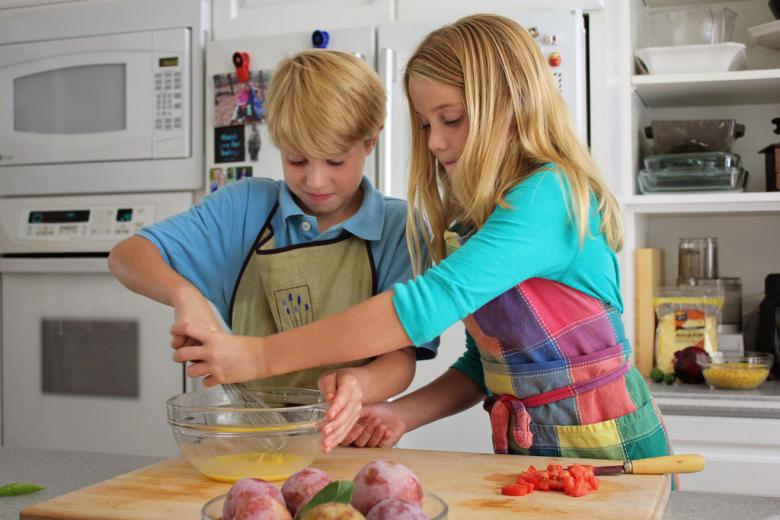Why Cooking Tops Methods of Teaching Food Literacy to Kids
Why cook?
Educators, nutrition scientists, and public health officials agree that healthier eating is a priority for today’s youth, but they do not necessarily agree about the best methods changing kids’ diets. Should we plant a garden in every school? Should we revamp school lunch? Or, should we teach children the lost art of cooking? Although there are many routes to impacting food consumption, some methods are better than others when it comes to developing food literacy—the awareness that our individual and collective food choices impact personal health, the natural environment, and our surrounding communities. Findings from a recent study of the opportunities students have to learn about food in school demonstrate that cooking may be a more direct way to influence students’ food relationships. Here’s why:
Cooking exposes kids to a wider variety of food choices. When children cook, they experience firsthand the ingredients that make up a healthy meal. Unlike consuming foods prepared for them, cooking instills an understanding that a balanced meal is “balanced” not because it contains the right nutritional content, but because certain food combinations in a meal taste better together.
Cooking embraces the culinary arts. When teachers or guest chefs share the “trade secrets” of the cooking profession, students have the opportunity to see themselves in the role of a chef. They learn practical skills, such as how to chop onions, peel potatoes, and stir batter, and how do complete these tasks to the specification of a recipe. They also reap the benefit of sharing the workload when they clear their cutting boards into the community bowl.
Cooking builds community around food. When kids cook together in a classroom setting, they build a shared culture of eating. Preparing and enjoying food becomes part of their social milieu and they develop habits that transfer to life outside of school. For instance, when teachers share simple recipes from classroom cooking sessions, students often can’t wait to recreate these dishes for their families. Meals prepared from scratch are usually healthier, but they also taste better when shared with each other around the table.
Although many viable activities can transform eating, cooking has potential to alter food literacy most directly because it focuses more broadly on aspects of food often overlooked by nutrition science or garden education alone.
For more data on why cooking ma be the best method of improving food literacy, click here.
Carrie A. Strohl of the UNiversity of California, Davis researched the impact of teaching methods that increase children’s food literacy. Strohl currently works as a Literacy Specialist with The Learning Design Group at The Lawrence Hall of Science at University of California, Berkeley. She is also a community volunteer with the UCCE Master Gardeners of Napa County where she leads the School Garden Task Force in supporting food education in schools.


